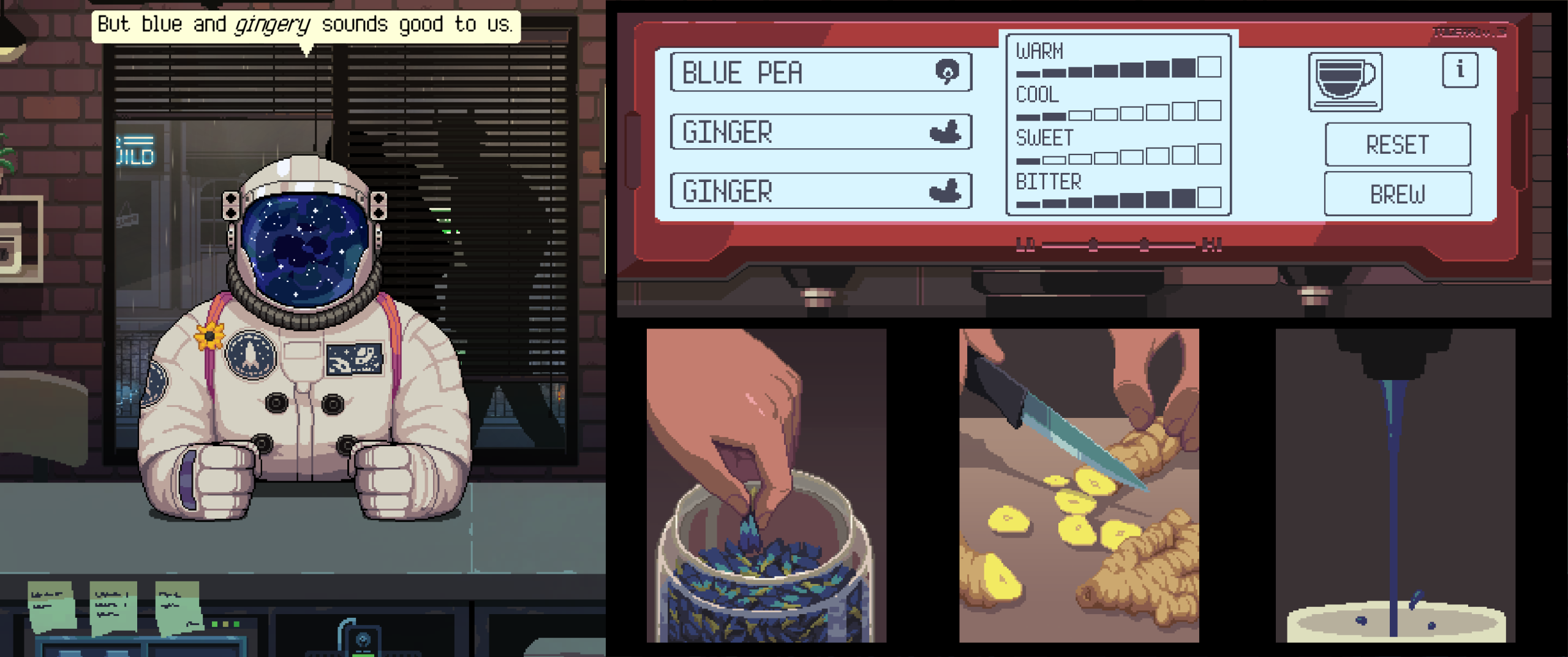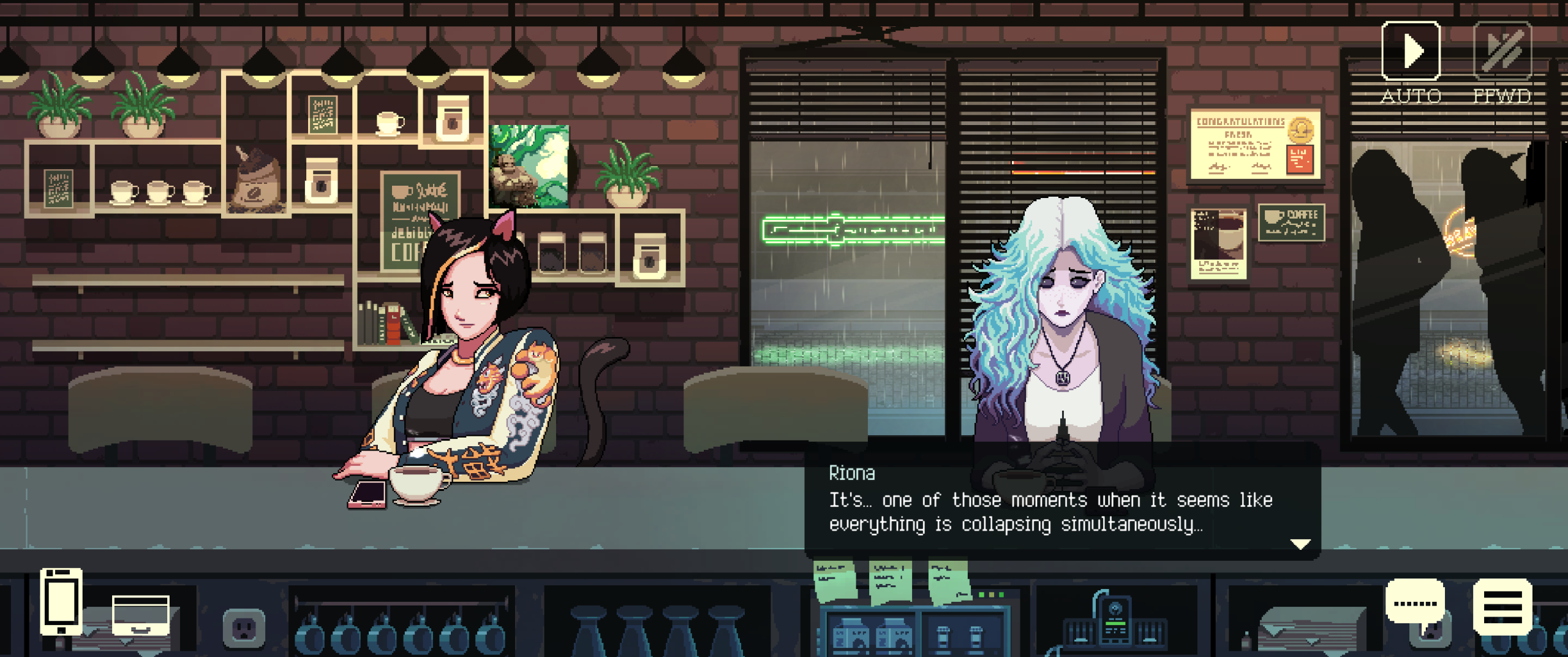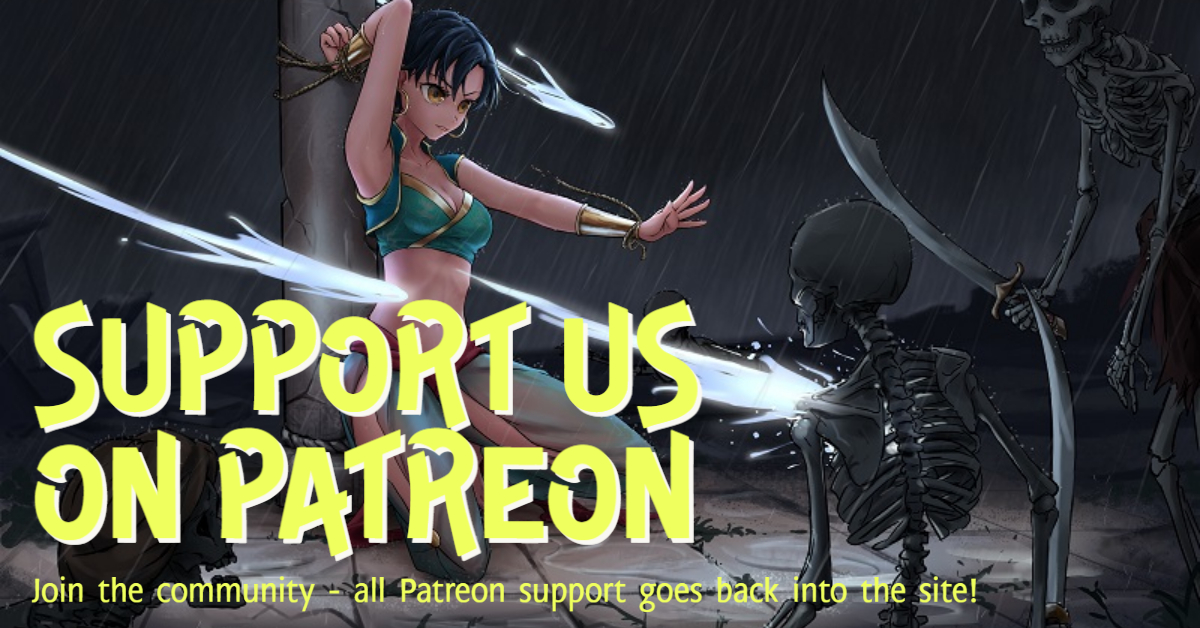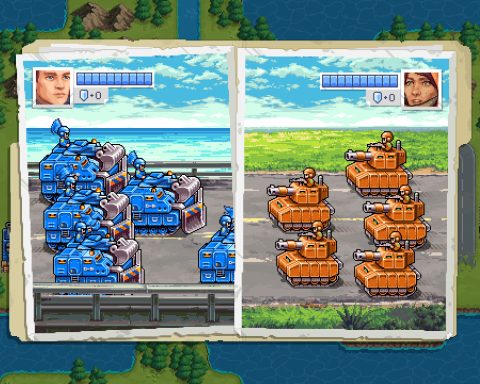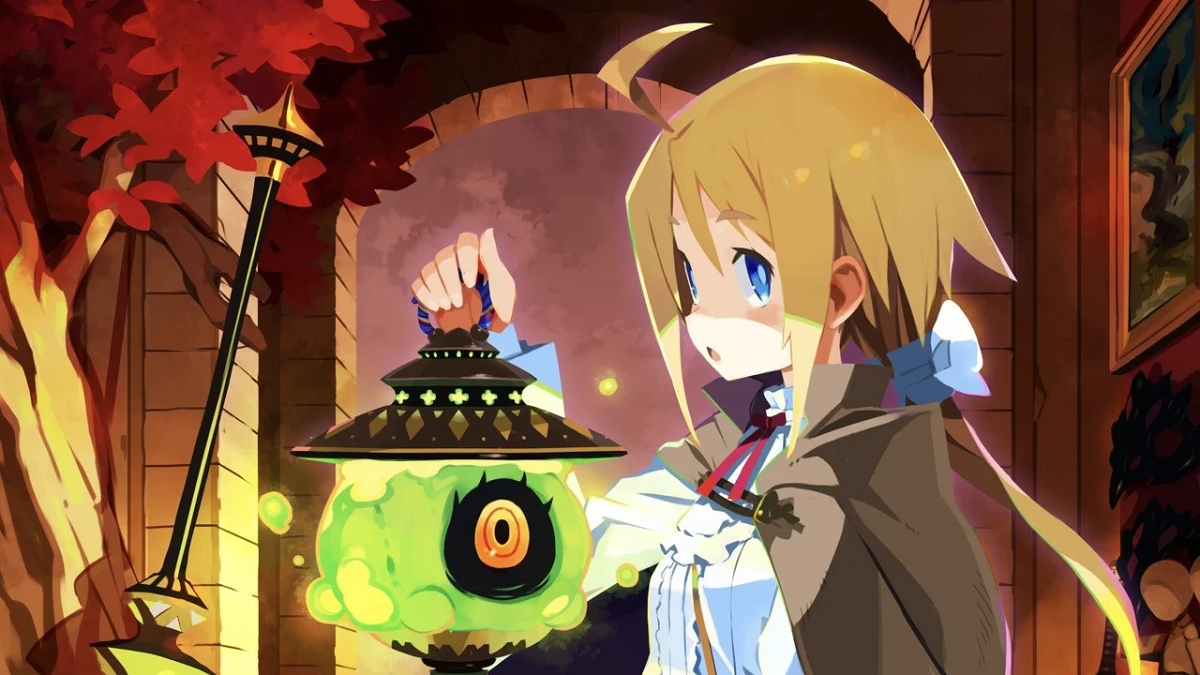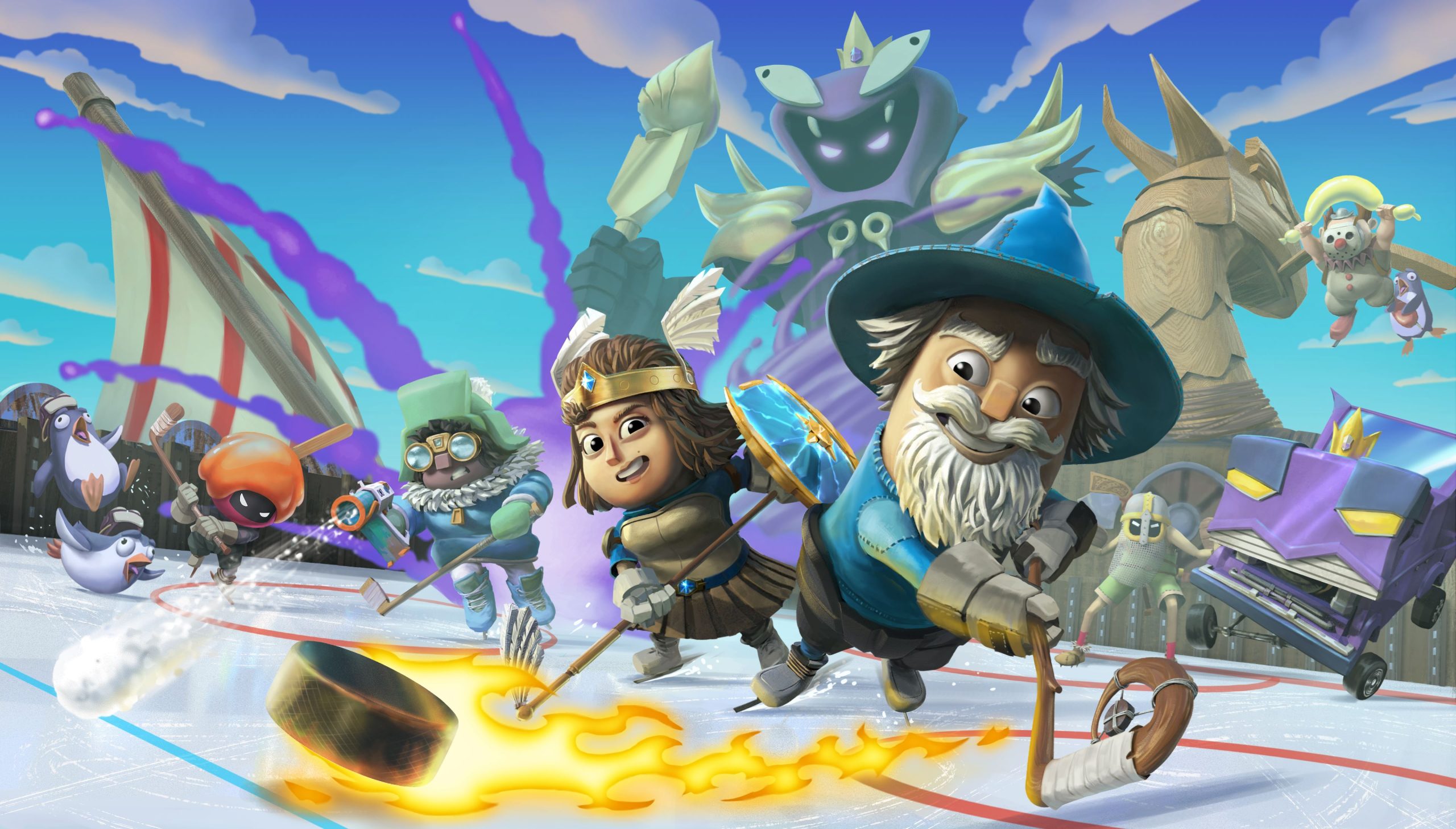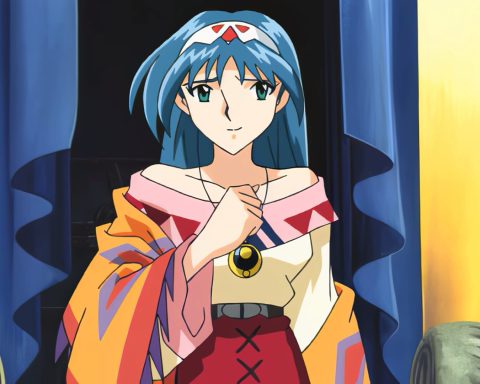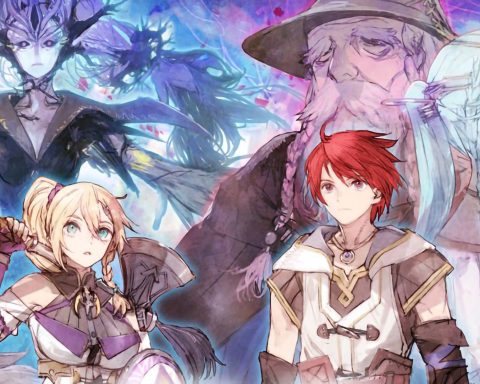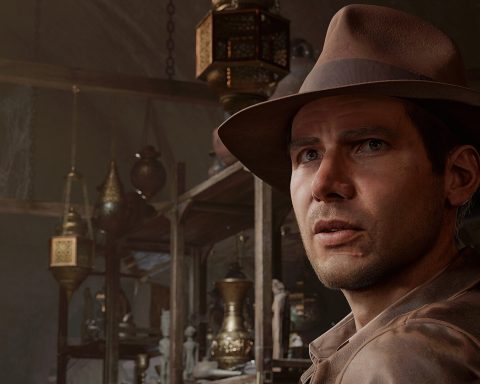Coffee Talk was a downright treasure. In fact, I’d argue it got better with each playthrough. I gave it four of five stars in my review (published in January 2020… before the world went to hell in a handcart). I’m not a do-stuff-outside-my-house kind of person – thanks, agoraphobia – but I like to think of coffee shops as being cozy and warm and welcoming. That’s what I felt playing Coffee Talk and I’m pleased to say that feeling extends to the sequel, even in the small amount of time I was able to play: the preview only covered four in-game nights, and I’m looking forward to many, many more in the full version.
Let’s start with the premise of the game. It is set in an alternate universe version of Seattle where creatures (like orcs, for example) and humans live side by side. The game starts off:
“Seattle – 2023. It is a moment when history is questioned and traditions are challenged. Acceptable is a battle and identity is a luxury they just began to grasp. Many who are feeling lost turn to their screen to find their footing, and the world becomes fast-paced with increased connectivity.”
Coffee Talk 2: Hibiscus & Butterfly takes place at the same coffee shop as in its predecessor; Coffee Talk is both the name of the game and the name of the shop. And this time, there are some new teas at Coffee Talk! One is hibiscus, the other is butterfly pea flower tea – hence the game’s title. I’m not even kidding, this game made me crave tea so badly that I now have an online shopping cart with $50 of tea just waiting to be purchased from my favourite tea retailer. The part of the game with the most “play” is customer orders. They’ll sometimes be direct, but often they’ll describe what it is they want (like something bright and very spicy) and it’s up to you to make them their perfect drink (in this example, butterfly pea flower tea plus ginger plus more ginger). Between orders, you’ll learn about the lives of customers. They’ll talk to you and talk to each other. This is where the game is pure visual novel, with not even a choice in sight, just text. I like to set it to auto and watch it like a moving storybook.
The familiar faces make me very happy. How could I not be when Officer Jorji is the first customer?! Unfortunately, he explains that Freya apparently won’t be stopping by as she’s on a research trip for her new book. I’m kind of bummed about that, as I liked her from the original Coffee Talk, but there’s still so many other people to love that it doesn’t make much of a difference in the end (even though she’s my favourite). For example, old customers Aqua and Myrtle stop by on the second night, and Lua on the third. There are some continuing storylines (for example, Lua and Bailey are getting married!) but there’s nothing that would prevent the game for being accessible to those who haven’t played the first yet.
I’ve talked a lot about what’s familiar, but what’s new? This time, you’re able to give customers items in addition to their order; for example, people may forget keys or leave contact information for another customer. There are also new customers to meet. There’s Lucas, a satyr (he’s got horns) influencer, for the first time. He explains social media in this universe, which is a smart way to incorporate a tutorial into the game. And… there is a banshee. This is so exciting to me that it’s taking everything in my power not to write that in all caps, bold, italicized, and twenty points bigger. Her name is Riona, and she’s a delivery driver with a dream of being an opera singer.
There were some parts of the game that made me question things. The game takes a dig at game publishers… I wonder if that’s from experience? It seems very weird that customers can smoke inside… is that still a thing in real life? And how can a coffee shop survive for years when they only have a handful of customers each night?! Who is bankrolling this joint?! (I’m kidding. Mostly.) Finally, how much do I need to play before my latte art skills improve? I swear I’m as bad as I was the first time I tried it in the first game. Luckily, nobody is judging me so I can get away with weird pointy swirlies.
The game runs well. Really well. Nothing super janky going on here! I mean, using the controller feels a little awkward at times when it’s not clear what to do. Generally, though, controls are on-screen at all times. There are some minor text issues, like weird spacing after apostrophes, but nothing major or experience-altering. The only thing that bothered me was that no matter what I do, the cursor still appears in controller mode. At the middle of the screen. Every time you press a button. So it keeps reappearing, moving it off to the side doesn’t do anything. It’s annoying but I soon learned to just look past it.
Before I end with this preview, I’d like to take a moment to reflect on Coffee Talk’s creator and writer, Fahmi. I never met him. I never even spoke with him. I knew of him, though, and followed his work extensively. When he died a year ago, a huge hole was left in the gaming world. I remember the outpouring of love and support for his family and friends at the time. He was an incredible developer, one of few big international names from Indonesia’s growing games industry. Coffee Talk 2: Hibiscus & Butterfly would not exist if not for him, and even in the early stages of the game it’s evident he would have been so proud of how his creation has evolved while its heart remains the same.
